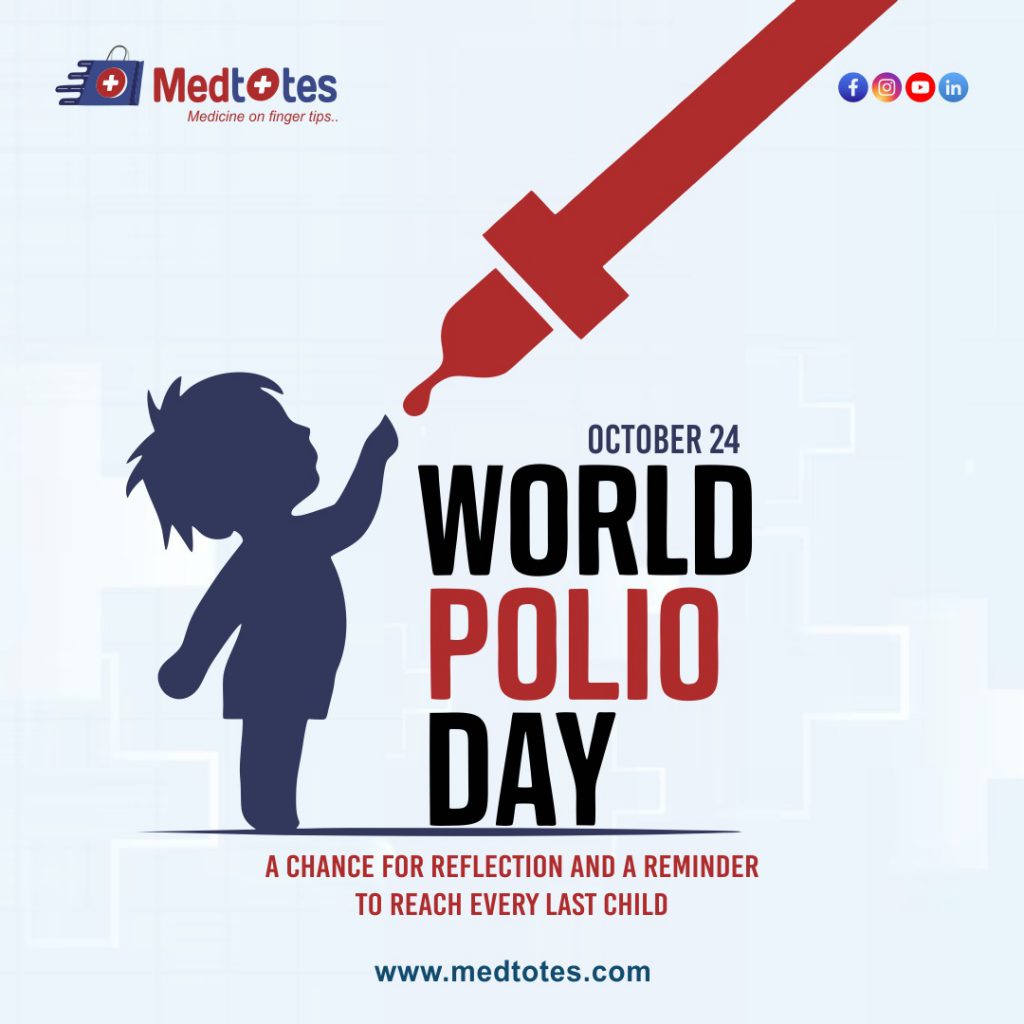Introduction
Every year on October 24, World Polio Day serves as a reminder of the continuous efforts to eradicate polio, one of history’s most destructive illnesses. This global celebration, organized by organizations like the World Health Organization (WHO) and Rotary International, raises awareness about the struggle to eradicate polio and recognizes the extraordinary accomplishments made over the years. However, it also emphasizes the hurdles that remain as the world approaches the end of its fight to eradicate polio.

The Legacy of Polio
Poliomyelitis, also known as polio, is a highly contagious virus-borne disease. It primarily affects children under the age of five, leading to paralysis, muscle weakness, and, in some cases, death. In the mid-20th century, polio outbreaks were common, leaving thousands of children paralyzed for life. The fear of polio gripped communities worldwide, making the development of an effective vaccine one of the greatest medical achievements of the 20th century.
The Role of Vaccination
Eradicating polio has proven to be a complex task, especially in conflict zones where political instability, misinformation, and logistical challenges hinder vaccination campaigns. Vaccine hesitancy and refusal have also become significant barriers to eradication in some regions. As new strains of the poliovirus emerge, the need for stronger immunization systems and sustained political commitment is more urgent than ever.
The importance of continued support and A Polio-Free Future
World Polio Day is a call to action for governments, healthcare providers, and the global community to continue supporting polio eradication efforts. Funding for vaccination campaigns, particularly in high-risk areas, is crucial. Communities must also remain vigilant, with strong surveillance systems in place to quickly detect and respond to any new cases of polio.
The world is on the verge of a historic victory, which could see polio join smallpox as the only human illnesses exterminated. With ongoing global cooperation, investment, and public awareness, this goal is attainable. World Polio Day serves as a reminder that while the finish line is approaching, the effort is far from over.
Conclusion
World Polio Day honors healthcare workers, volunteers, and organizations for their contributions to the fight against disease worldwide. It fosters a renewed commitment to a polio-free world and assures that no kid is infected again.
